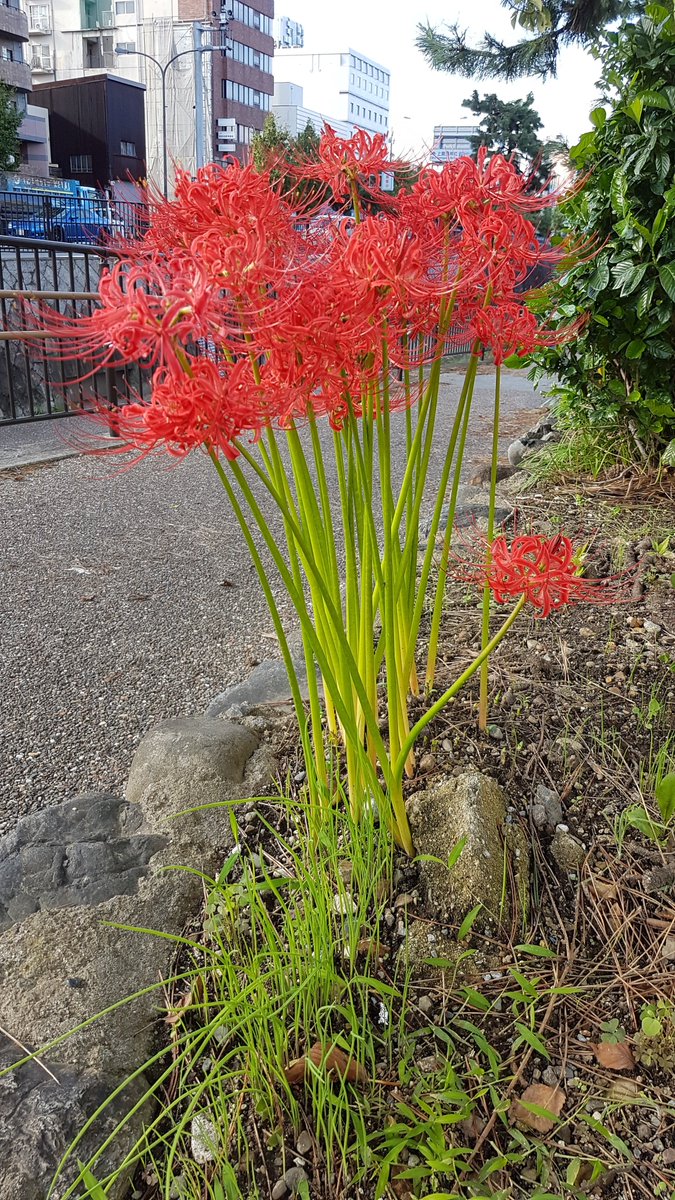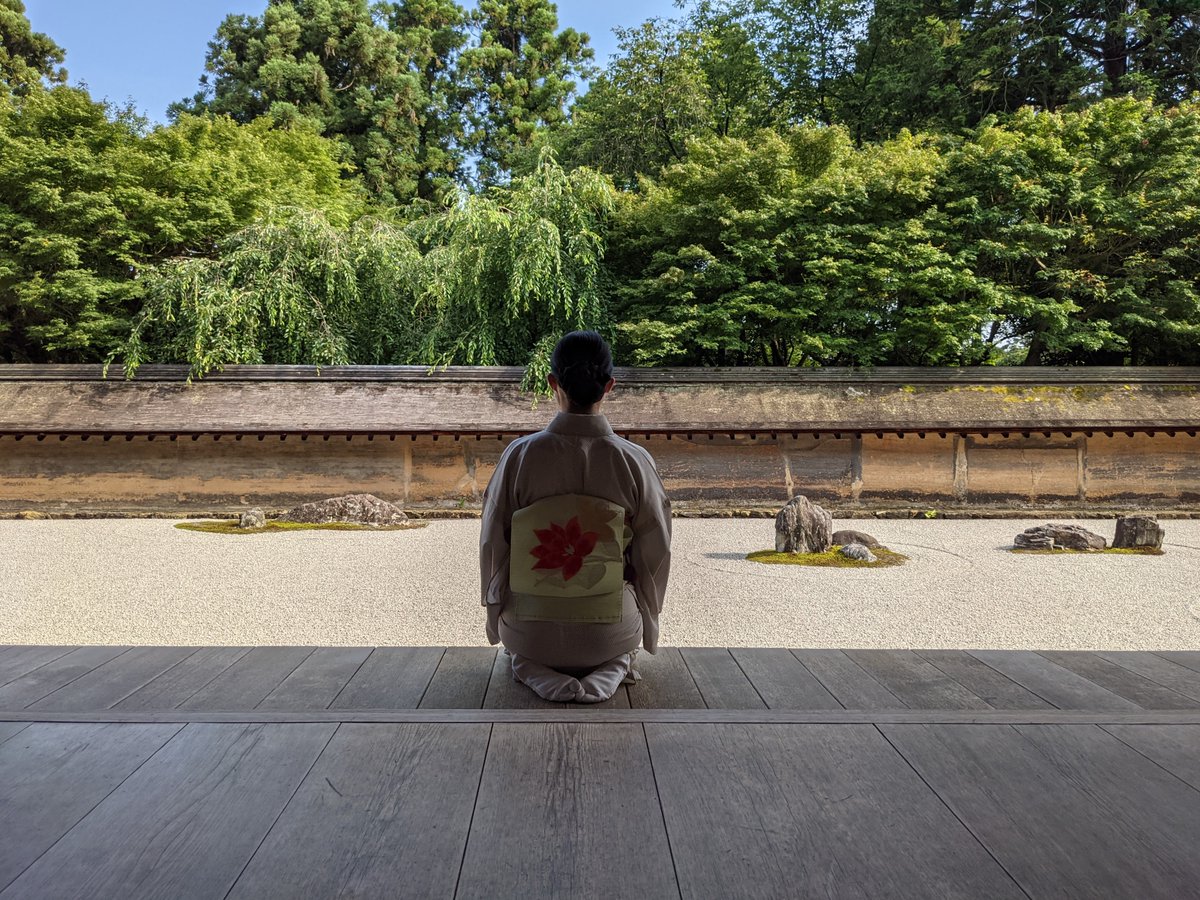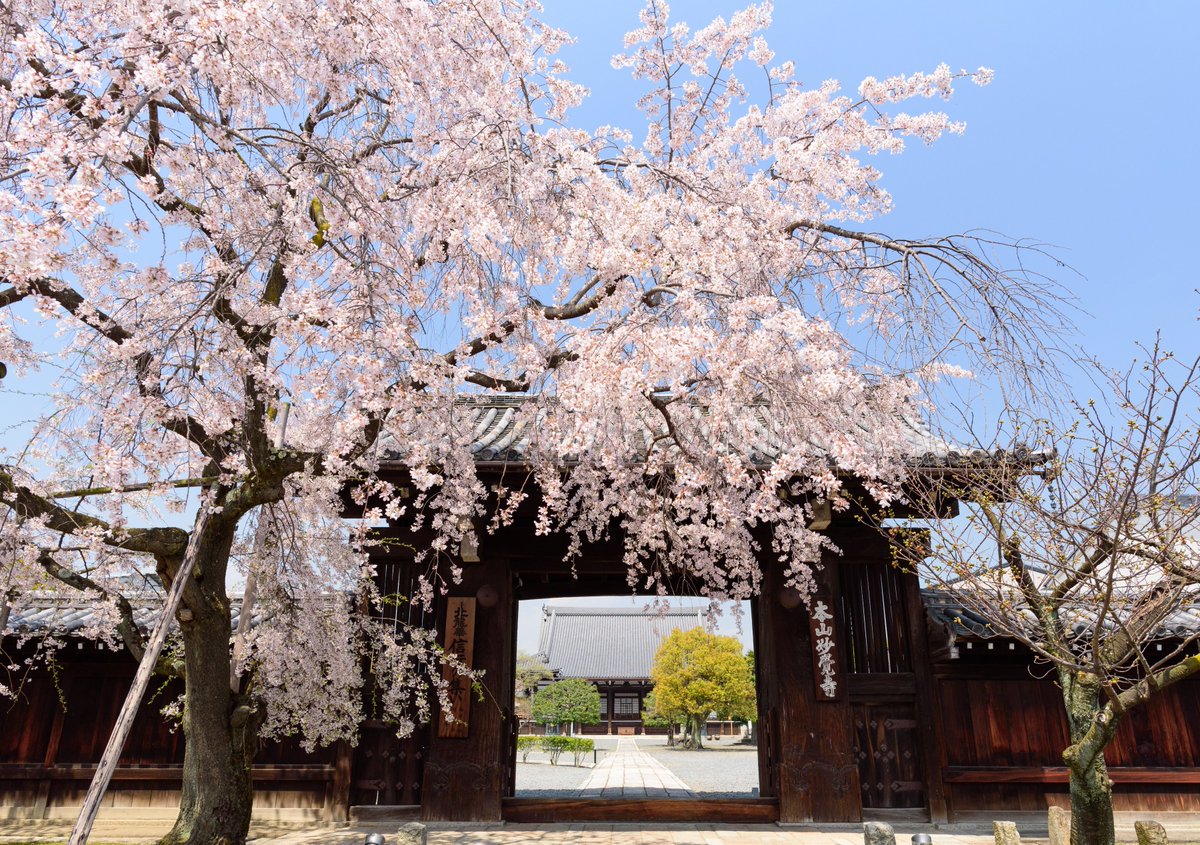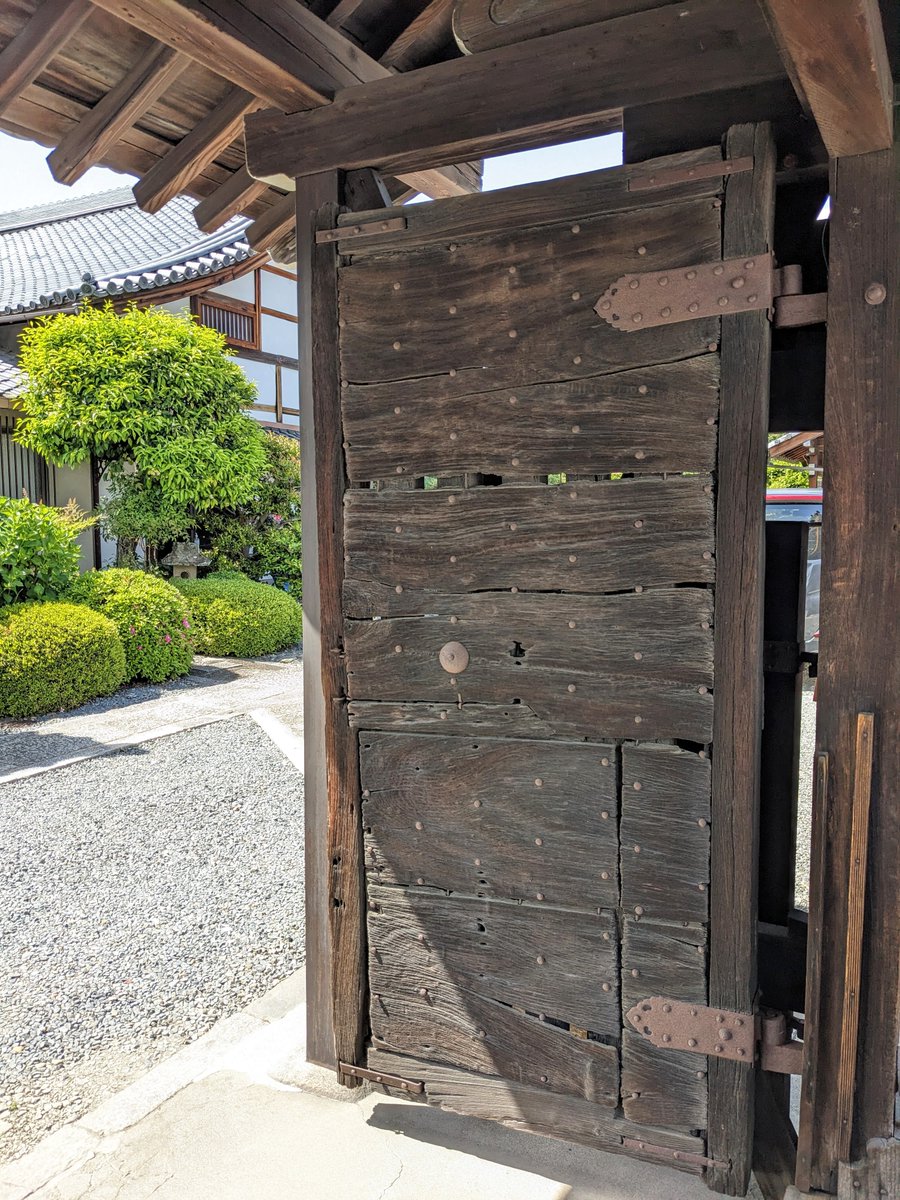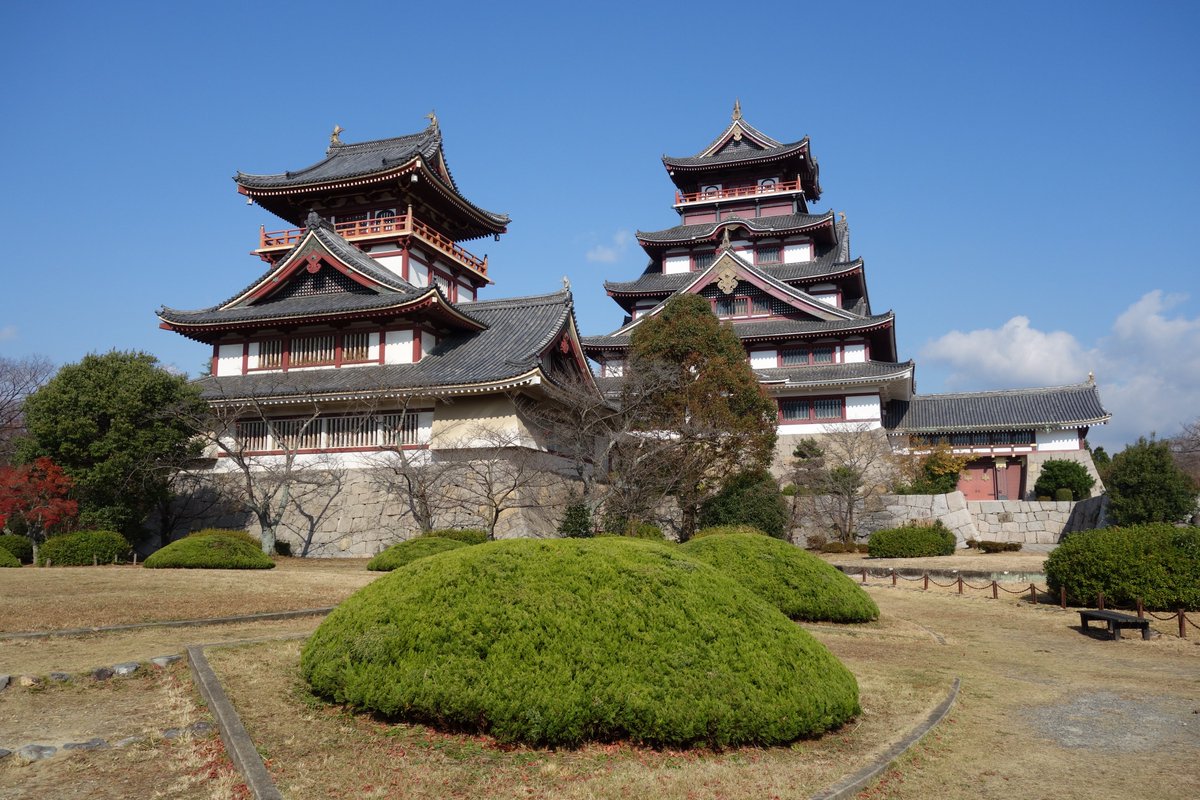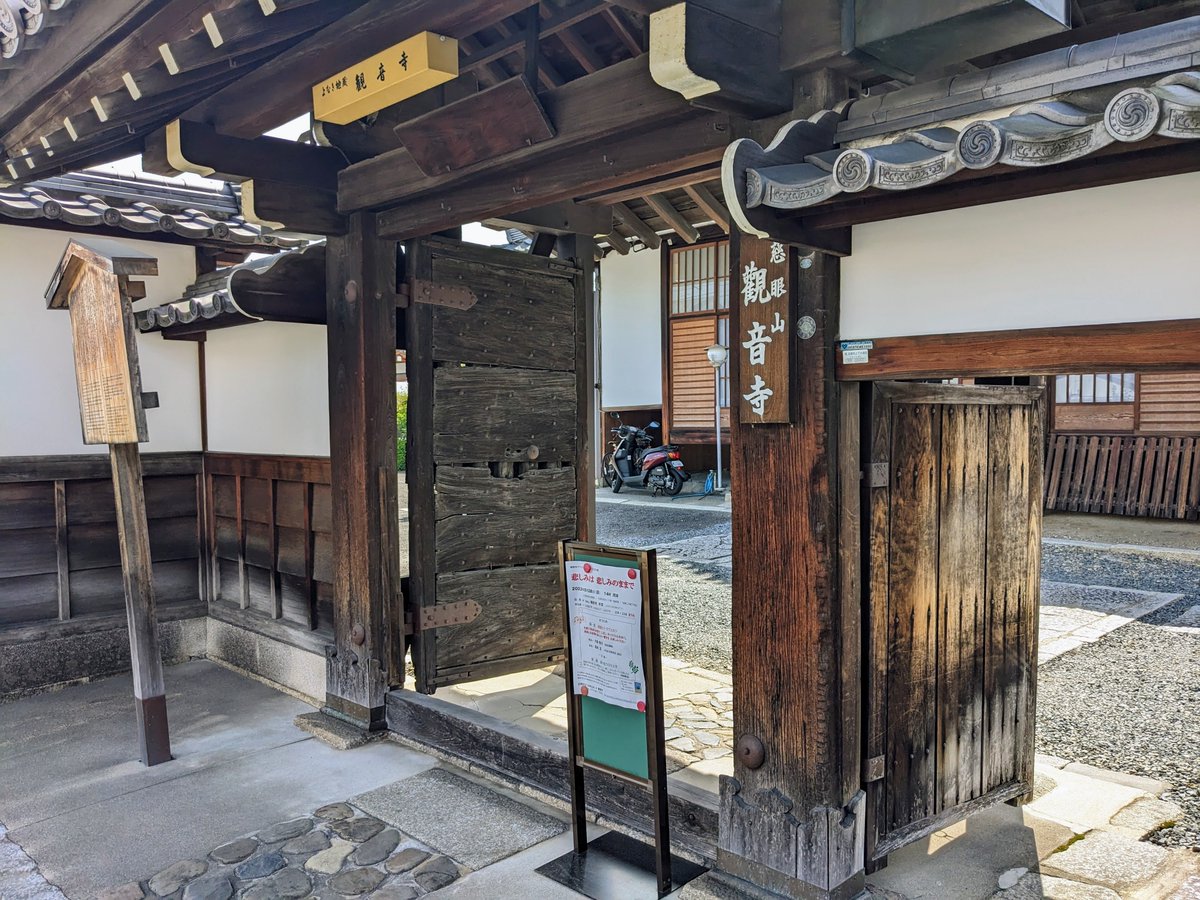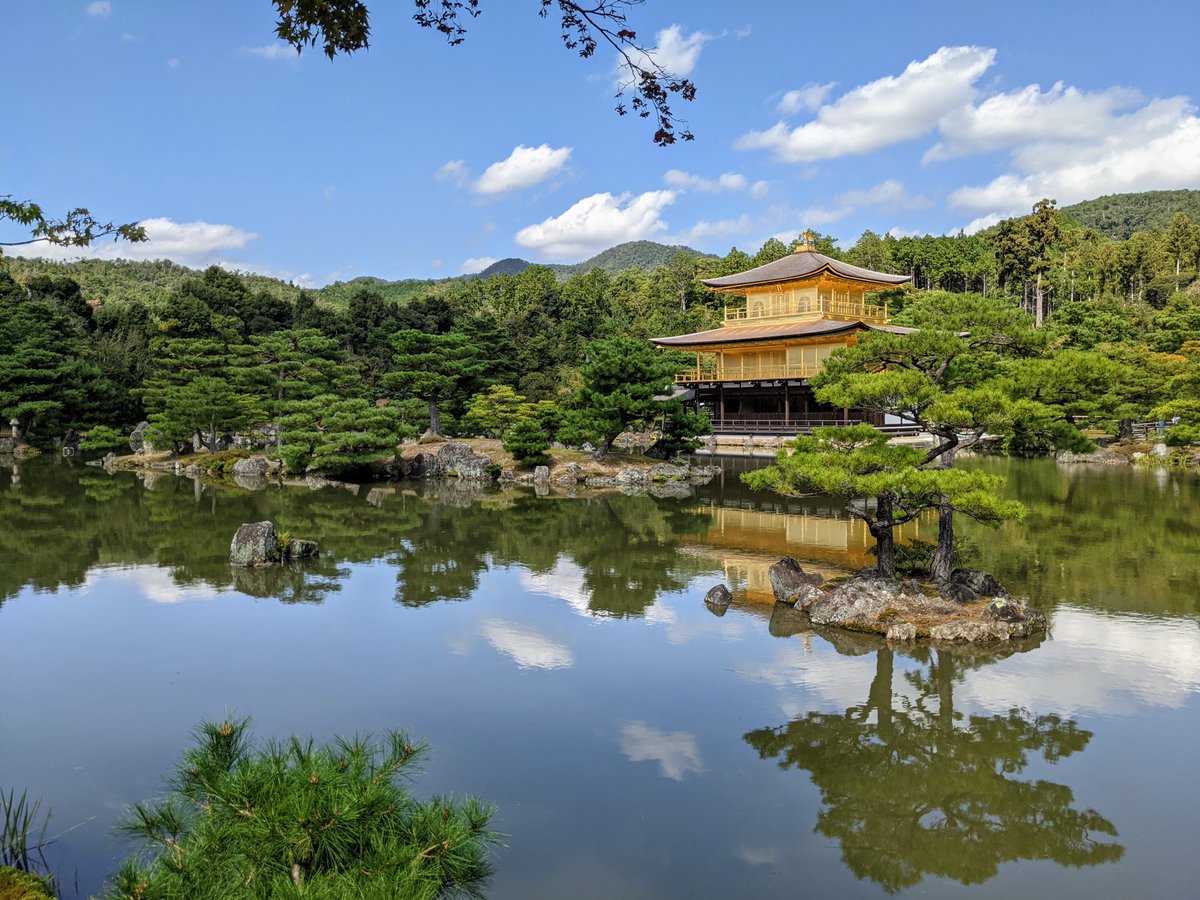🍶VALLEY OF THE TANUKI✨
at the end of autumn
this badger poses
as a Buddha...
秋のくれ仏に化る狸かな
-与謝蕪村 1716-84.
Tanuki (狸 'Raccoon Dogs') are real, if somewhat elusive, animals, that have featured prominently in folktales throughout the centuries.
#folklore #Japan



at the end of autumn
this badger poses
as a Buddha...
秋のくれ仏に化る狸かな
-与謝蕪村 1716-84.
Tanuki (狸 'Raccoon Dogs') are real, if somewhat elusive, animals, that have featured prominently in folktales throughout the centuries.
#folklore #Japan



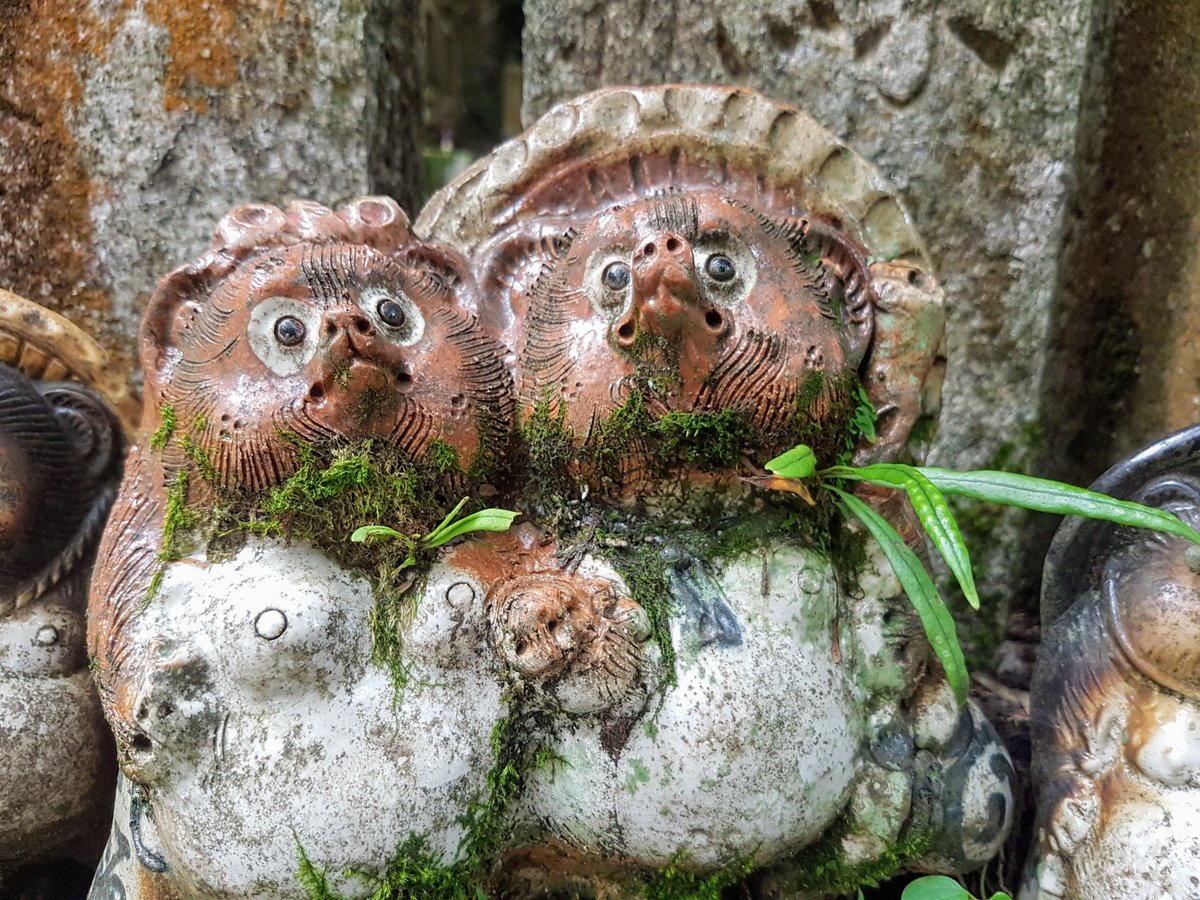
Just like kitsune (狐) and bakeneko (化け猫), tanuki have the ability to shape-shift. One of the first passages to mention tanuki describes them transforming into humans and singing songs during the reign of Empress Suiko (推古天皇 554-628).
#Kyoto #狐 #化け猫 #Japan #folklore



#Kyoto #狐 #化け猫 #Japan #folklore




Tanuki (狸) have 8 special traits that bring good fortune🎱🙌🍀
(1) 笠 straw hat = prepared against bad weather & trouble
(2) 大腹 big belly = level-headedness
(3) 尾 tail = perseverance
(4) 通 promissory note = honesty
(5) 丸い目 big eyes = discernment & good decisions



(1) 笠 straw hat = prepared against bad weather & trouble
(2) 大腹 big belly = level-headedness
(3) 尾 tail = perseverance
(4) 通 promissory note = honesty
(5) 丸い目 big eyes = discernment & good decisions
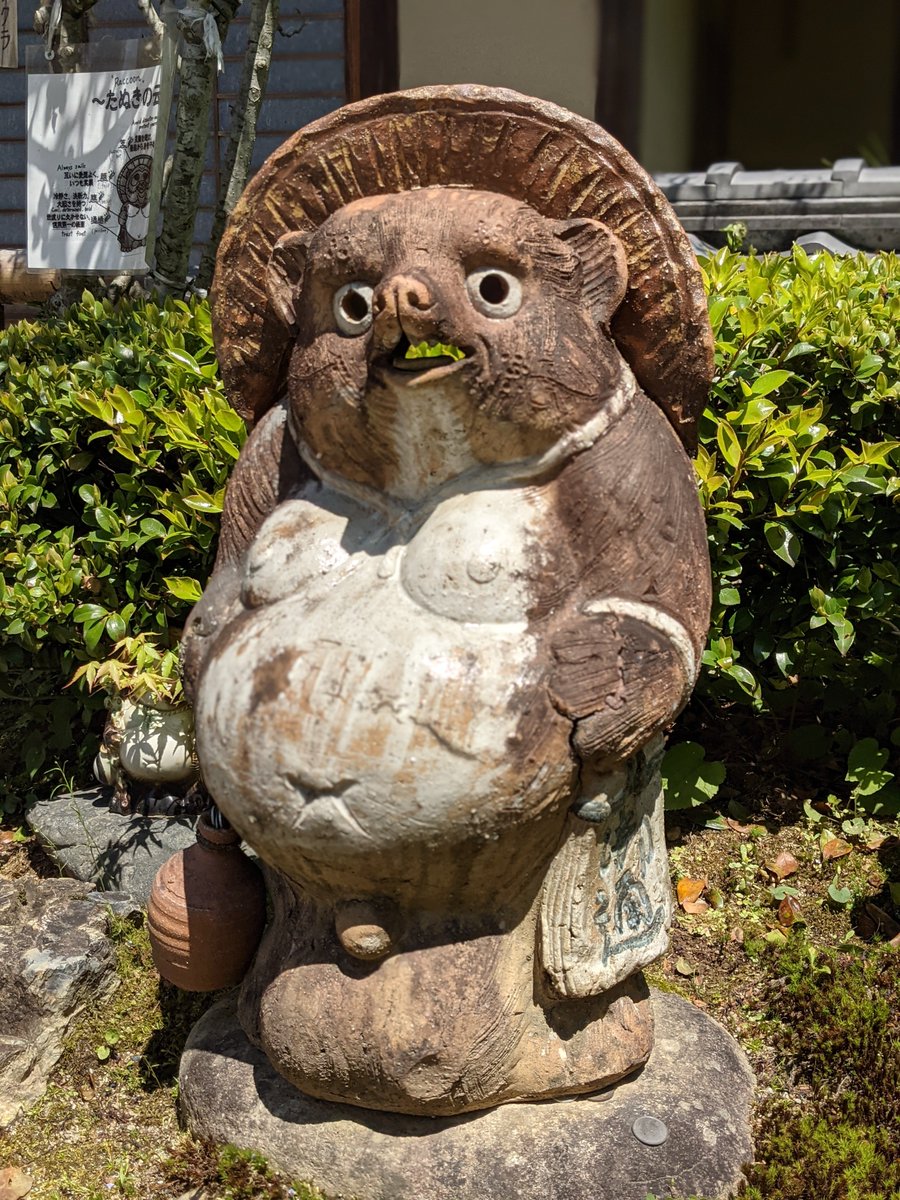


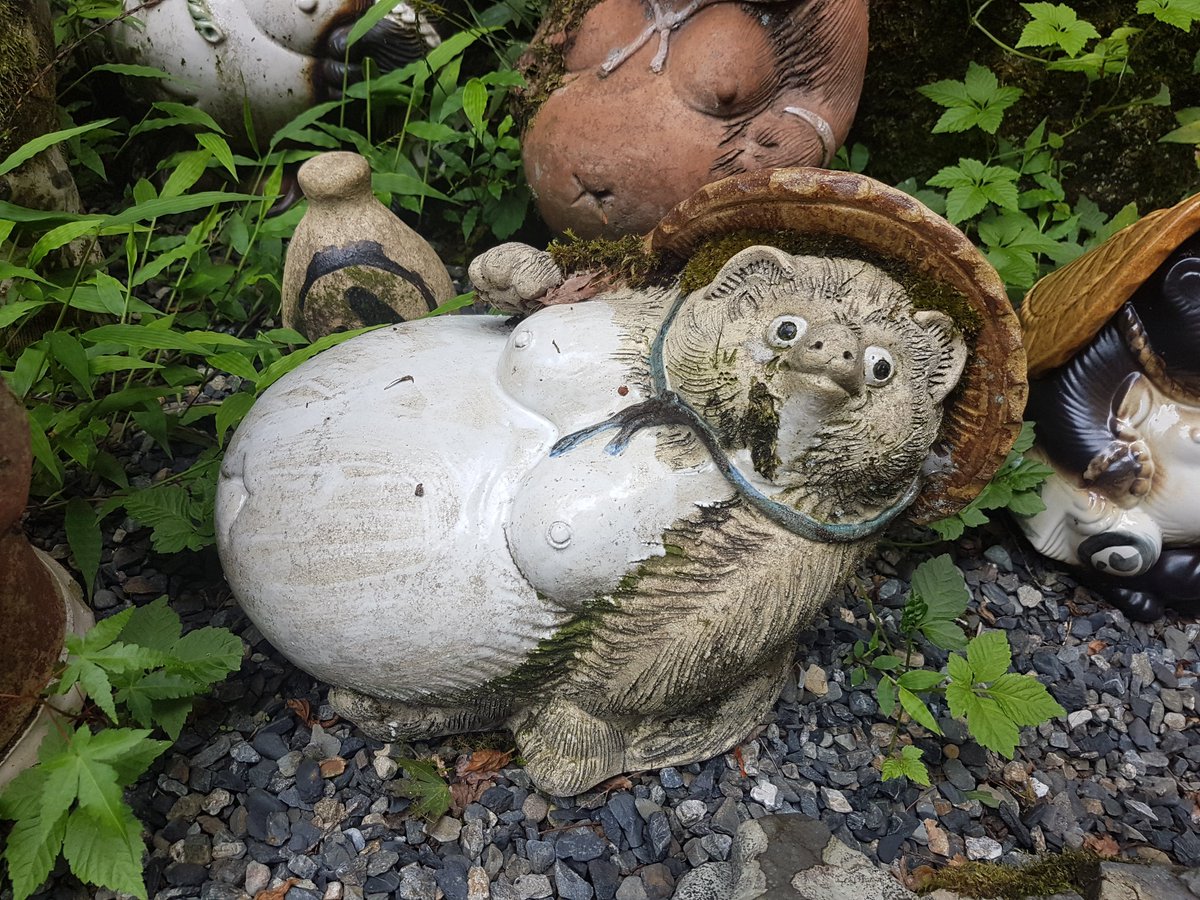
(6) 顔 smiling face = welcoming nature
(7) 徳利 saké flask = gratitude & honourable lifestyle
(8) 金袋 giant scrotum👀 = expanding wealth
Of a jolly disposition, tanuki have a love of alcohol, which might go some way to explaining their absentmindedness and foolish nature.



(7) 徳利 saké flask = gratitude & honourable lifestyle
(8) 金袋 giant scrotum👀 = expanding wealth
Of a jolly disposition, tanuki have a love of alcohol, which might go some way to explaining their absentmindedness and foolish nature.




Tanuki (狸) is the name for the 'Japanese Raccoon Dog', a very much real animal. Bake-danuki (化け狸) more specifically refers to the shape-shifting creature of folklore.
Nowadays most people use 'tanuki' to describe both🤔
#tanuki #bakedanuki #folklore #狸 #化け狸 #Japan
Nowadays most people use 'tanuki' to describe both🤔
#tanuki #bakedanuki #folklore #狸 #化け狸 #Japan
A famous children's song goes -
たんたん狸の金玉は
風もないのに
ぶーらぶら
tan-tan-tanuki's balls,
even without wind,
they swiiiiing-swing!
Tanukis are often depicted with larger than life scrotums. These too have supernatural qualities👀
#Japan #folklore #tanuki #狸
たんたん狸の金玉は
風もないのに
ぶーらぶら
tan-tan-tanuki's balls,
even without wind,
they swiiiiing-swing!
Tanukis are often depicted with larger than life scrotums. These too have supernatural qualities👀
#Japan #folklore #tanuki #狸
It was said that a tanuki's scrotum could be stretched to the size of 8 tatami mats (about 12.24 sq. meters)😲
And thus it could be used for all manner of things, such as a fishing net, sail, umbrella, blanket, and even as a water catcher.
#Japan #tanuki #folklore #狸 #たぬき



And thus it could be used for all manner of things, such as a fishing net, sail, umbrella, blanket, and even as a water catcher.
#Japan #tanuki #folklore #狸 #たぬき




But why the large scrotum?
Well, it is thought that the idea emerged in Kamakura times. Goldsmiths would use the stretchy skin of Tanuki testicles when hammering gold nuggets into gold leaf.
'Kintama' (金玉 'golden balls') is used as slang for testicles even today.
#Japan #金玉
Well, it is thought that the idea emerged in Kamakura times. Goldsmiths would use the stretchy skin of Tanuki testicles when hammering gold nuggets into gold leaf.
'Kintama' (金玉 'golden balls') is used as slang for testicles even today.
#Japan #金玉
There was a time when tanuki scrotums were sewn into purses, sold as wallets and used as lucky charms.
As it was said the tanuki could stretch their scrotums, so it was believed your money could stretch further in a tanuki-ballbag-purse😖
#tanuki #kintama #folklore #京都 #Japan



As it was said the tanuki could stretch their scrotums, so it was believed your money could stretch further in a tanuki-ballbag-purse😖
#tanuki #kintama #folklore #京都 #Japan




One of the most famous tanuki in Kyōto could be found at Tatsumi Bridge (巽橋) in Gion Shinbashi (祇園新橋).
The mischievous creature would spend his days lurking beneath the bridge, delighting in frightening the passing maiko and geisha.
#CamelliaKyoto #Kyoto #folklore #Japan



The mischievous creature would spend his days lurking beneath the bridge, delighting in frightening the passing maiko and geisha.
#CamelliaKyoto #Kyoto #folklore #Japan
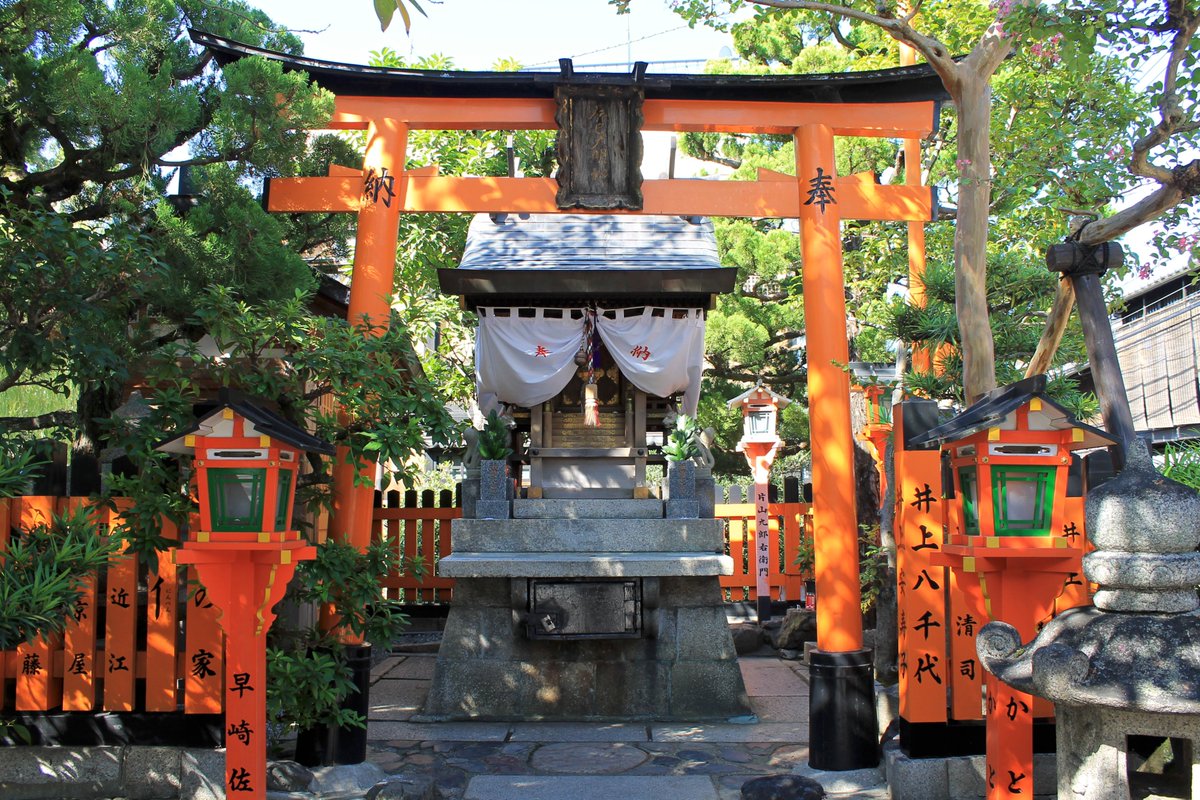


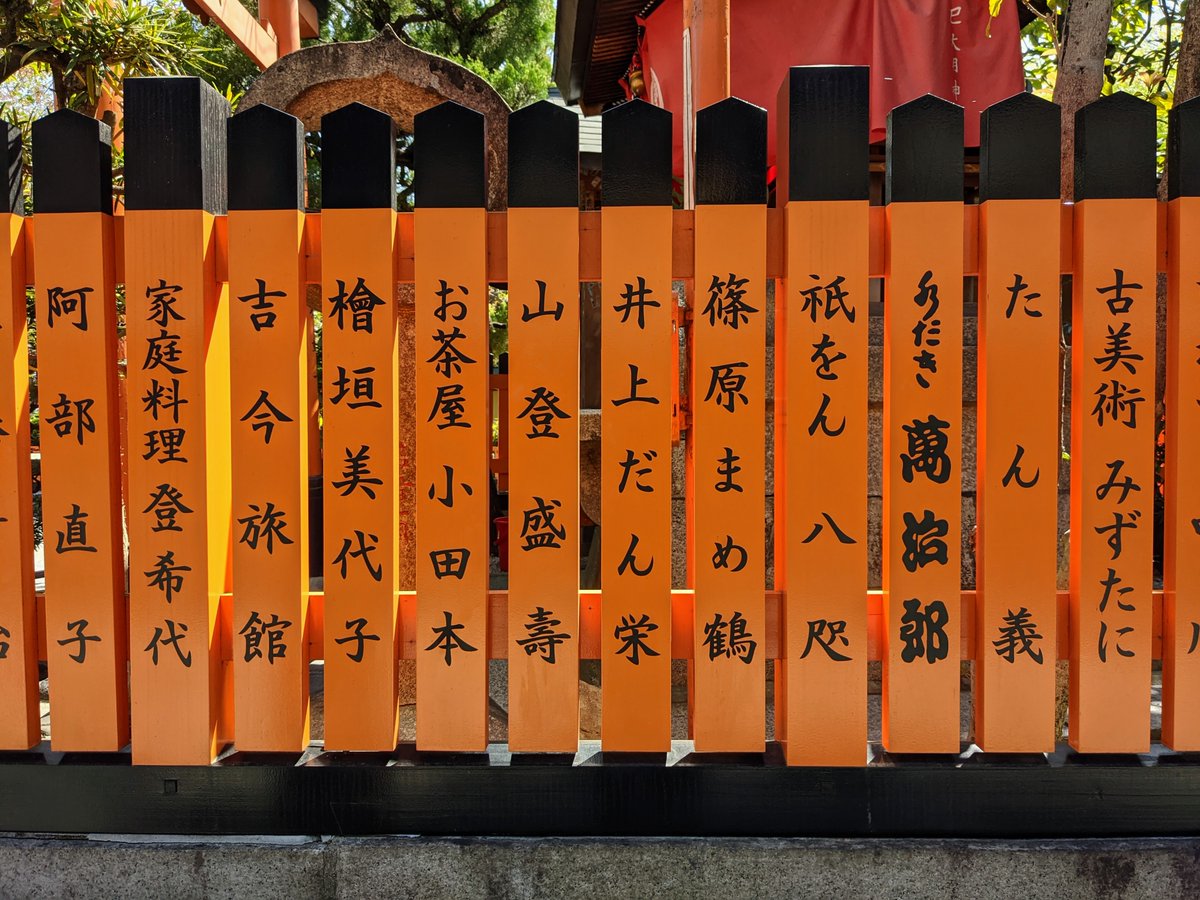
The shape-shifting tanuki (狸) would spend his days waiting to scare the unwary, craftily pickpocketing those that looked wealthy, and jumping out at young women, hoping they might tumble into the Shirakawa River (白川) below.
#Kyoto #Japan #TatsumiBridge #GionShinbashi



#Kyoto #Japan #TatsumiBridge #GionShinbashi




The locals eventually tired of the troublesome tanuki and in a bid to calm his chaotic nature enshrined him in the nearby Tatsumi Daimyōjin (辰巳大明神), also known as Tatsumi-jinja (辰巳神社), Tatsumi Inari (辰巳稲荷) and Gion-no-Oinari-san (祇園のお稲荷さん).
#Gion #Kyoto #祇園



#Gion #Kyoto #祇園




Tatsumi Daimyōjin (辰巳大明神) was built originally to protect the south east corner of the imperial palace. Tatsumi is another word for south east (辰巳/南東-the direction of the dragon/snake in the Chinese Zodiac) & so the shrine became known simply as Tatsumi-jinja (辰巳神社). 






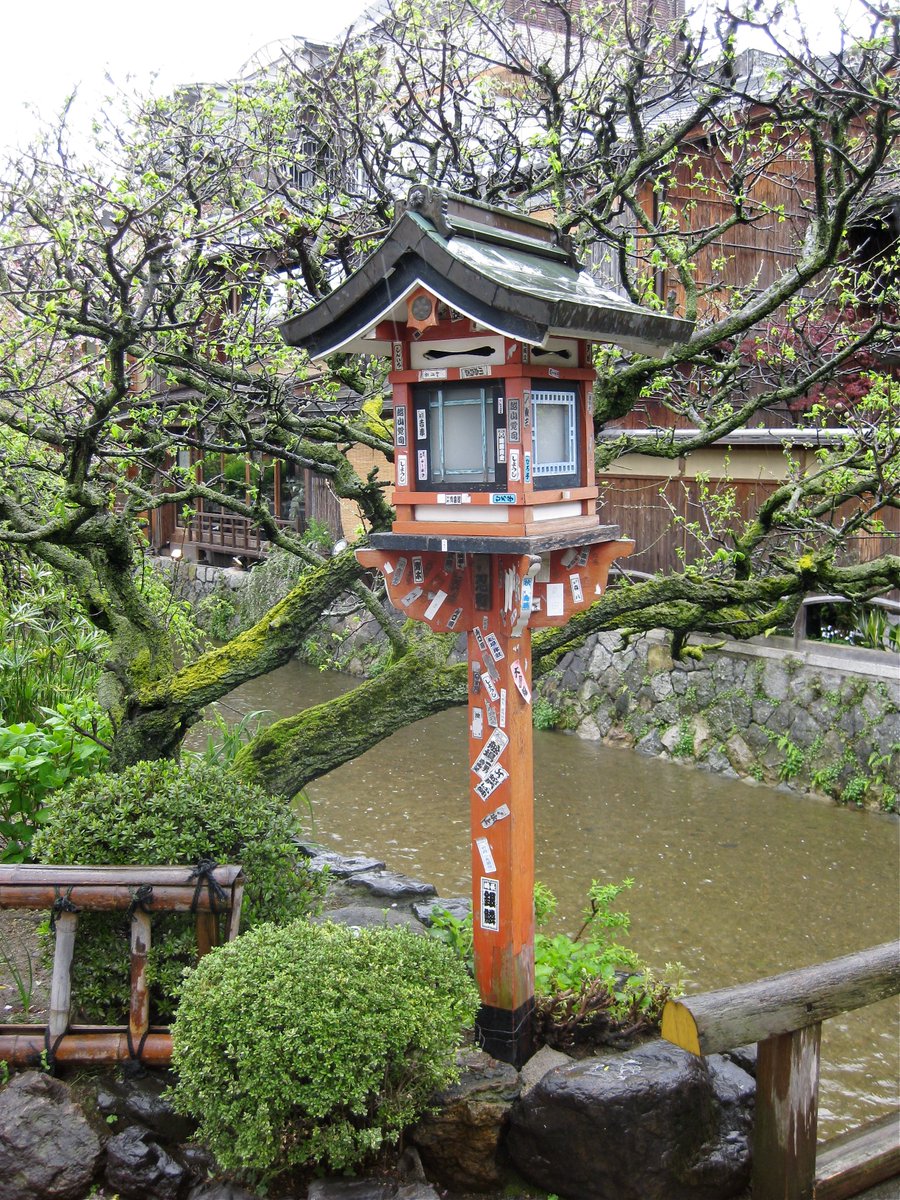
It is unclear when Tatsumi-jinja was first founded, but originally it stood to the south of Tatsumi Bridge (it moved after WWII).
Because of its position in the heart of Gion Shinbashi, it is common for Maiko and Geiko to pray here for improvement in their performance skills.



Because of its position in the heart of Gion Shinbashi, it is common for Maiko and Geiko to pray here for improvement in their performance skills.



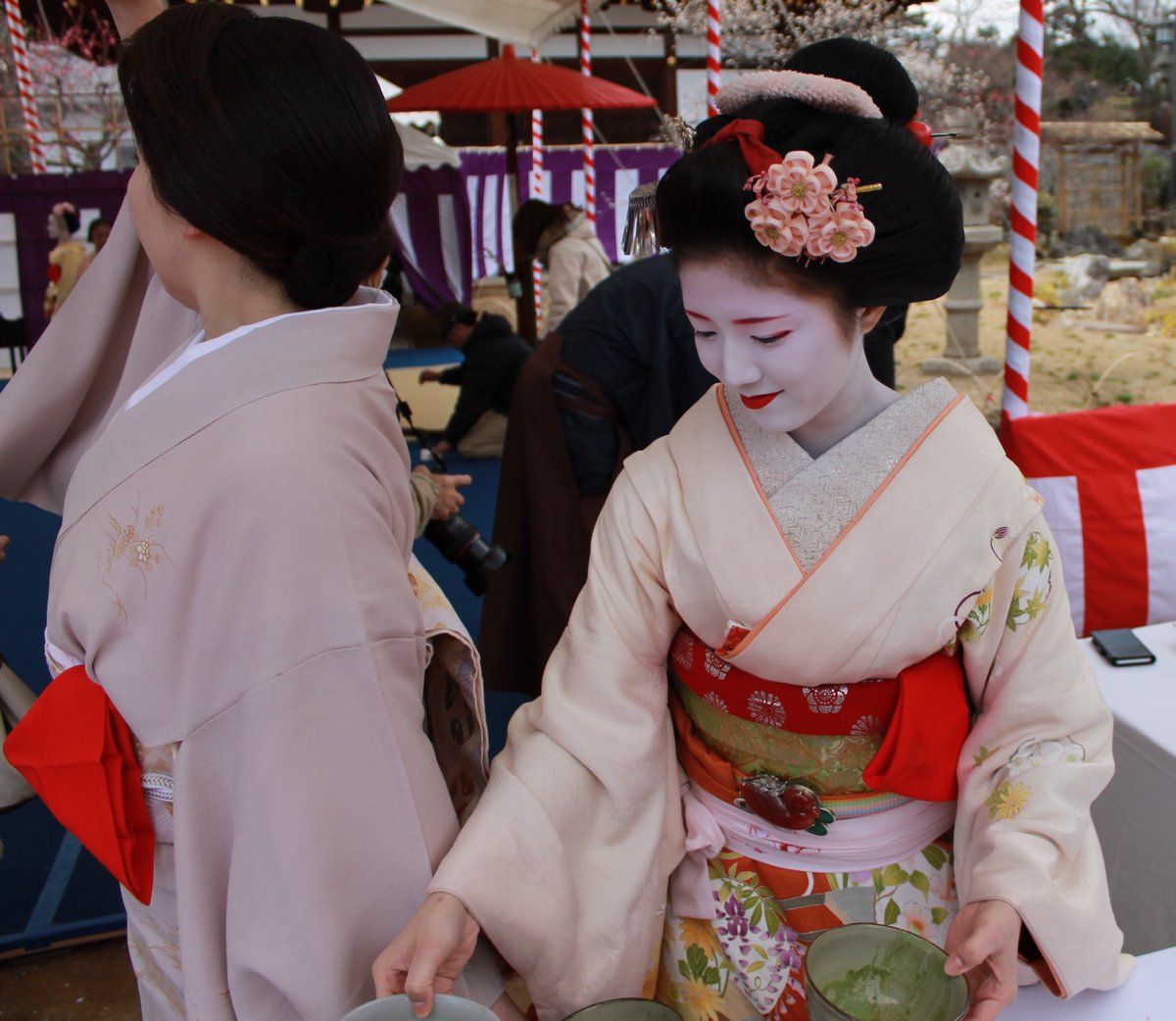
One of the best places to see tanuki (not real ones!) is Tanukidani Fudō-in (狸谷山不動院), a temple in the mountains above the famed Shisen-dō hermitage (詩仙堂).
with a badger
knocking at my door I lament
the passing of autumn
戸をたたく狸と秋をおしみけり
-与謝蕪村.
#Kyoto



with a badger
knocking at my door I lament
the passing of autumn
戸をたたく狸と秋をおしみけり
-与謝蕪村.
#Kyoto

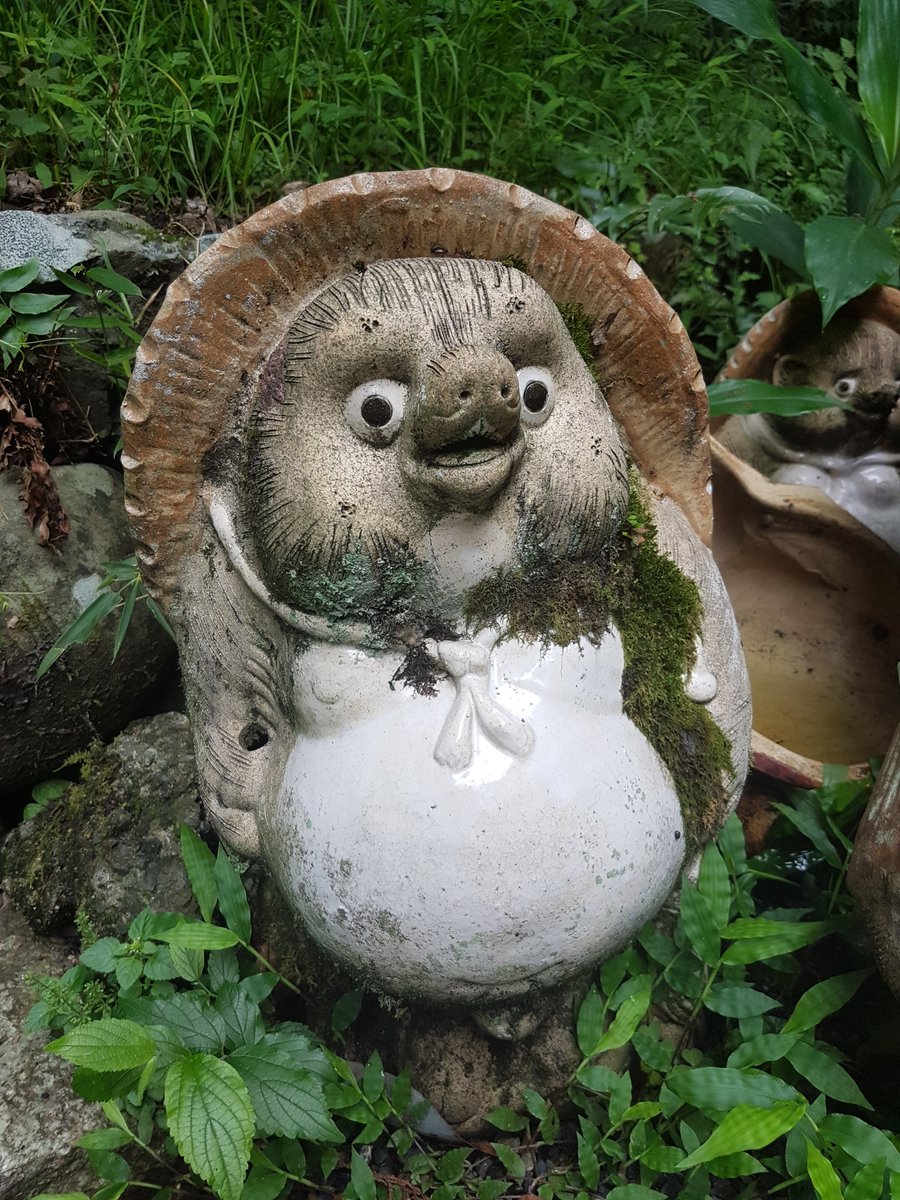


Although the slopes leading up to Fudō-in (不動院) are filled with statues of tanuki, the valley name 'Tanuki-dani' (狸谷山) likely comes from 'Ta-nuki' (タヌキ~他抜き~他を抜く), meaning -in this case- 'to draw/pull out' a person's bad luck or sickness.
#Japan #Kyoto #Tanuki



#Japan #Kyoto #Tanuki




The temple's origins stretch back to the founding of Kyōto, when Emperor Kammu enshrined an image of Fudō Myōō (不動明王) to guard against the 'unlucky' NE direction.
The temple's main hall is constructed in an overhanging style like the more famous Kiyomizu-dera (清水寺).
#京都



The temple's main hall is constructed in an overhanging style like the more famous Kiyomizu-dera (清水寺).
#京都




Miyamoto Musashi (宮本武蔵 1584-1645) spent a great deal of time at Tanuki-dani & Hachidai-jinja (八大神社), praying, training & bracing himself for battle at nearby Ichijō-ji (一乗寺).
It was at Ichijō-ji that he single-handedly crushed the Yoshioka School (Yoshioka-ryū 吉岡流).



It was at Ichijō-ji that he single-handedly crushed the Yoshioka School (Yoshioka-ryū 吉岡流).

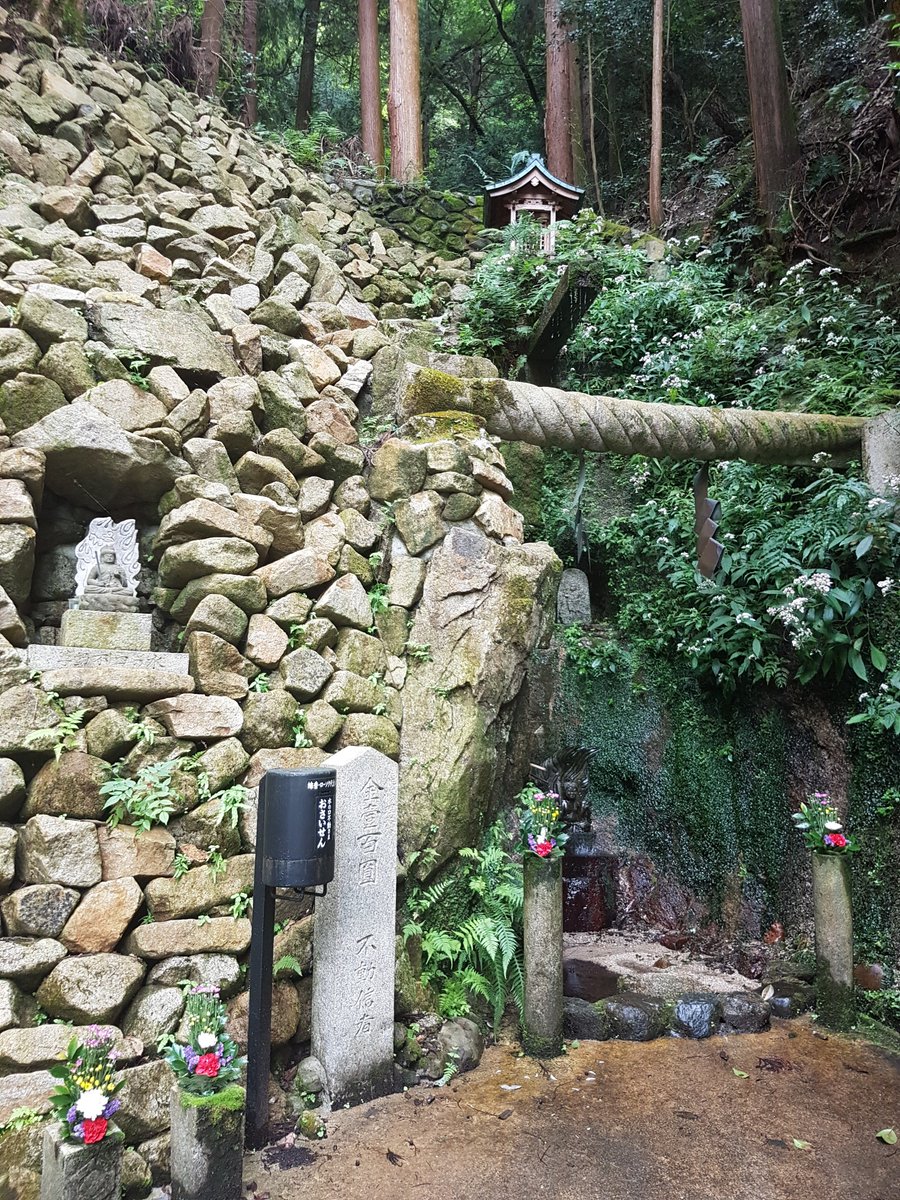
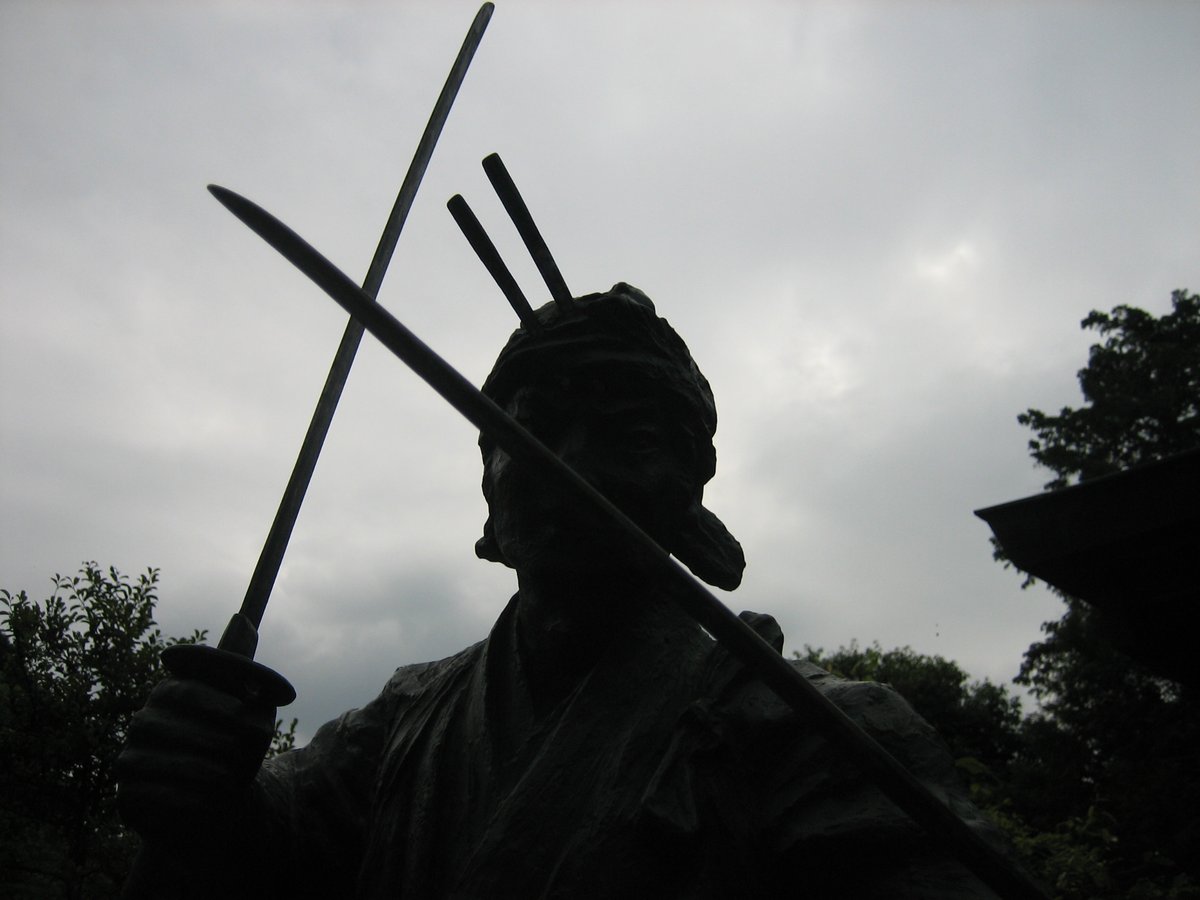

• • •
Missing some Tweet in this thread? You can try to
force a refresh



